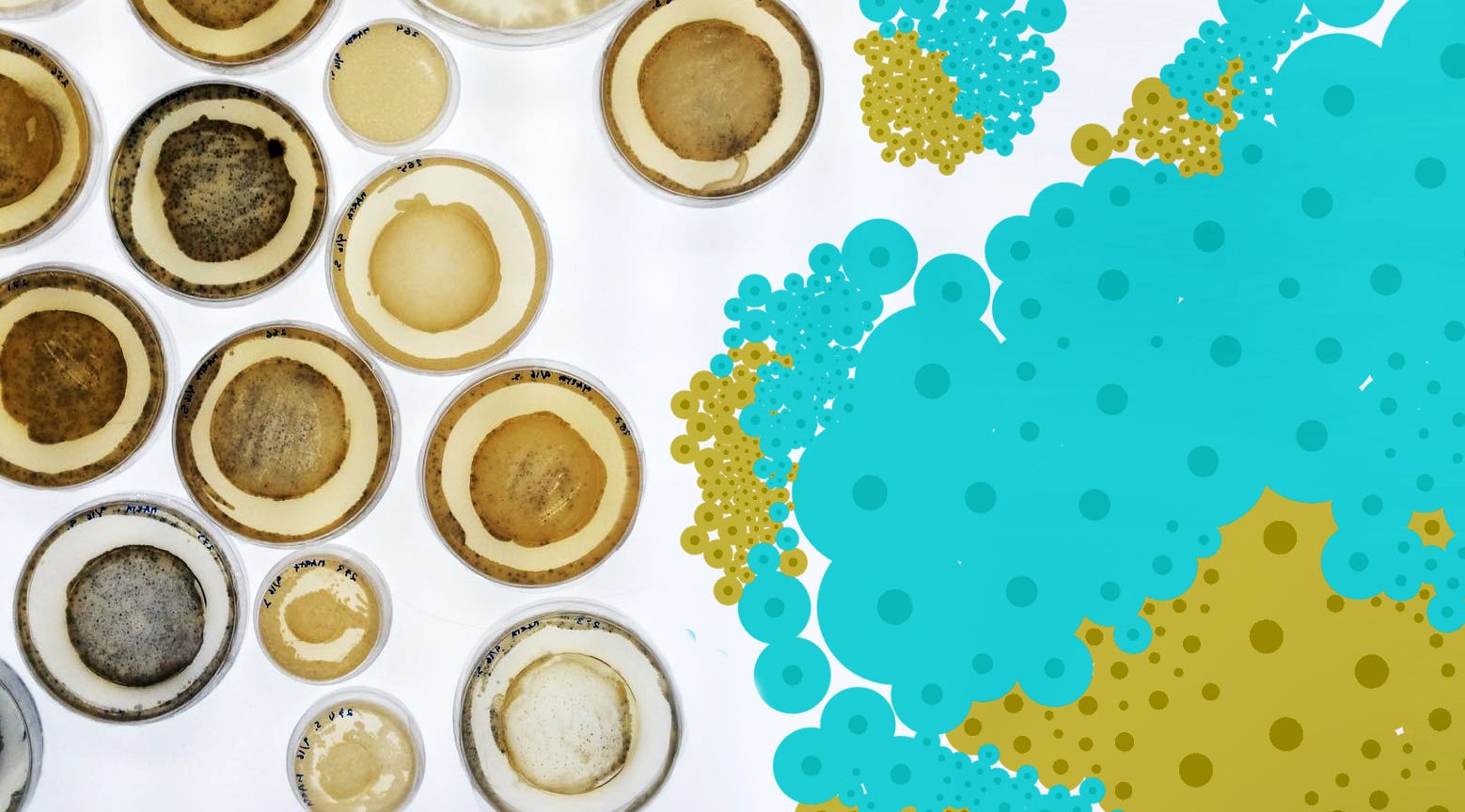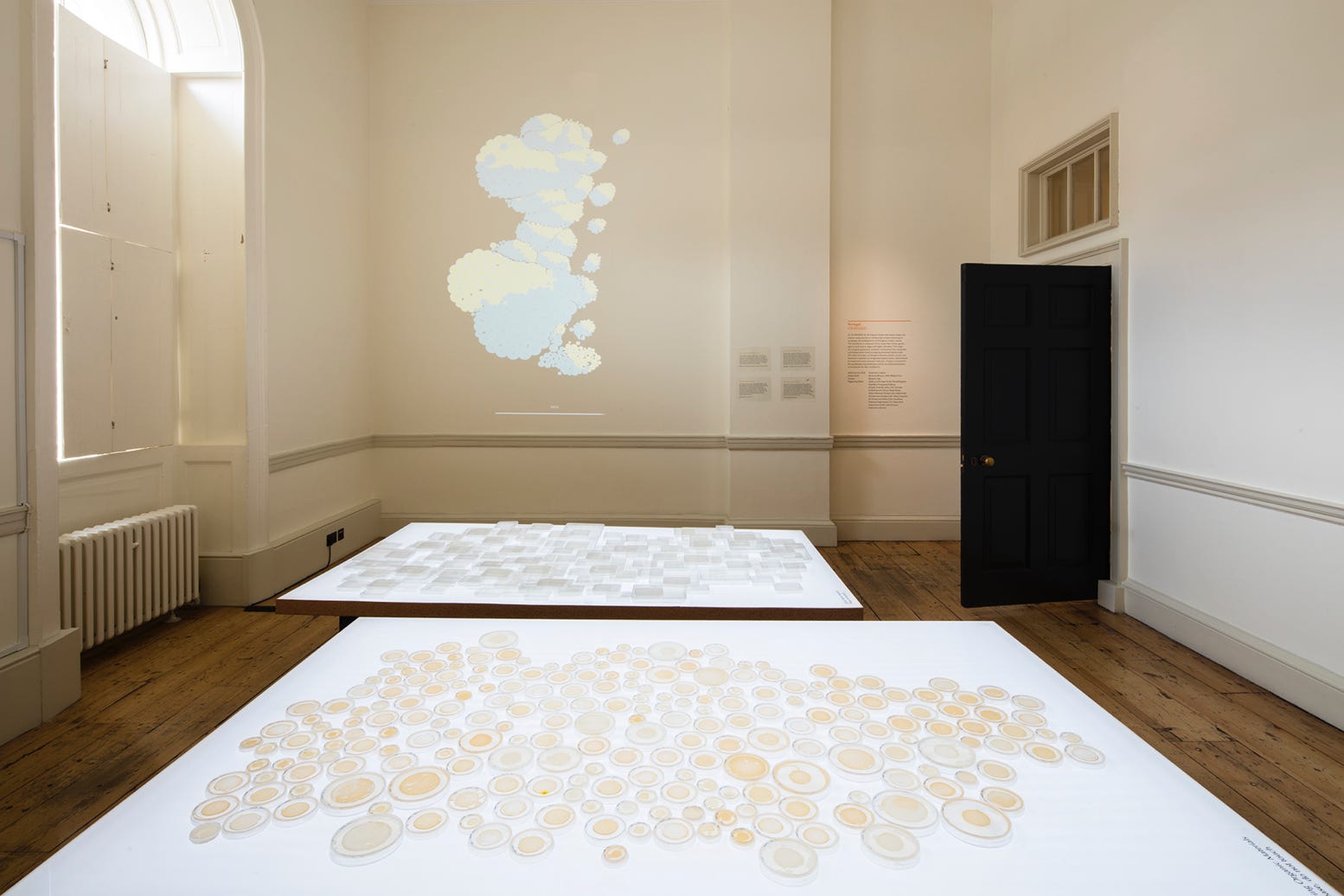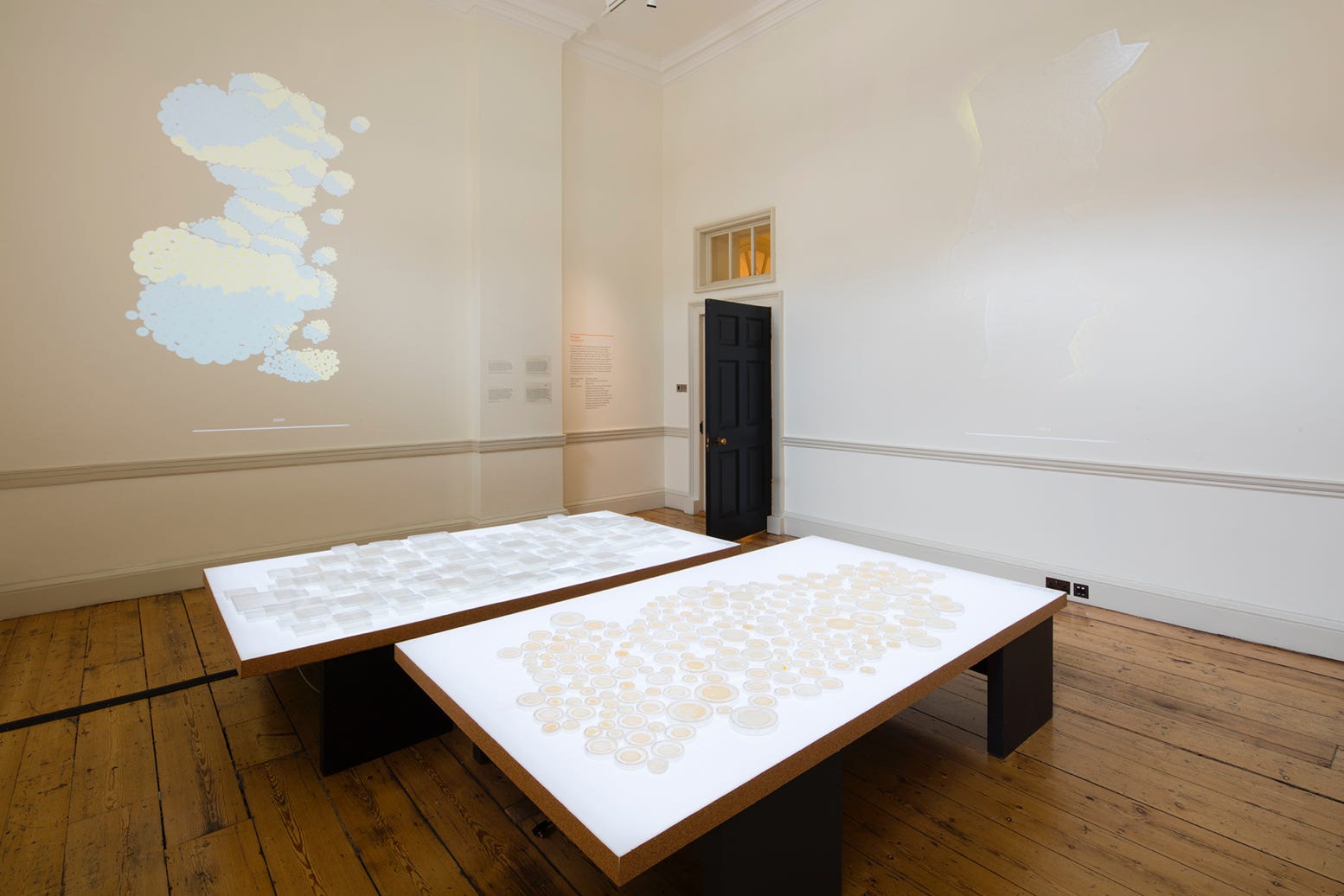
UN / BIASED
Installation for the London Design Biennale 2016. Collaboration with Marta de Menezes. Curated by Manuel Lima.
In UN/BIASED the Portuguese design team merge art, design and science, using bacteria to visualize data streams pertaining to an opaque, yet eroding factor in Portuguese society: sexism. The installation is comprised of four maps that contrast gender gaps in areas such as wages and higher education. Two maps are computer-generated, animated visualizations that extrapolate a dystopian future based on ongoing downward spiral trends. The other two maps use biological elements (plants, viruses, and bacteria) to represent an invigorated utopian nation, characterized by progressive socio-economic indicators. Utopia is conveyed by the equalitarian map landscapes and the use of natural elements as instruments for data visualization. Microorganisms are imagined as agents of change.
Cartogram on wage inequality (dystopia)
Each circle shows the sum of wages, of either men (cyan) or women (yellow), employed in various districts. As the animation evolves, the map reveals Portugal’s asymmetries in population distribution, with some regional areas allocating more wages than others. Furthermore, knowing that the number of men and women employed is similar, one can notice by the size of each circle how much inequality exists between men and women. On average, a woman makes 26% less than a man in Portugal.
Bacteria on wage equality (utopia)
On a glass table, a cluster of petri dishes traces the outline of Portugal. The relative PH value of the bacteria put on the agar (the jelly-like substance obtained from algae, in which it grows), depicts data relating to the inequality between gender and relative income in Portugal. As the bacteria grow, blue and red circles form on the plates to create a visual graph of the gap in earnings. After three days the cultures are at their most vivid, but then, as the bacteria continue to feed, “processing” the data, the entire piece turns a uniform shade of purple. Regional inequalities are equalled out and balance magically restored.

All installation images by Ed Reeve
Flowering education (utopia)
On this table is an experimental map using Arabidopsis, a small flowering plant widely used as a model organism in plant biology. The map illustrates the correlation between regional birth rates and levels of education amongst women and men in Portugal. Population density relates to the number of seeds in each petri dish, while the amount of growth hormones corresponds to the percentage with higher degrees. Birth rates are expressed through flowering. Over time, this blossoming plot will showcase a scenario where the rate of women with higher education is recurrently higher than men.

Shoals of migrants (dystopia)
Between 2011 and 2015, more than half a million Portuguese people (5% of the population) left the country. Struggling to make ends meet, migrants eventually leave Portugal, draining the country of its natural resources, in what is also known as brain drain. Many of these migrants are women. Each trace represents 170 women that departed between 2011 and 2015, and that at this rate, will leave between 2016 and 2020. The traces move and react in a way that mimics the motion of shoals of fishes around Portugal’s outline, forming a country outside a country. The yellow traces are women who ultimately left the country.
–